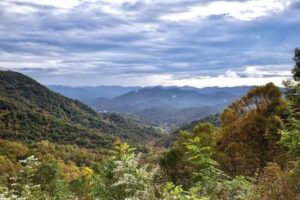The North Georgia Mountains are home to one of the many famous hiking trails in the world. Home to the tallest waterfall, tranquil lakes, and rich culture, it is the utopia for sports enthusiasts.
Thousands of families and groups visit this region yearly, thanks to its scenic landscapes and luscious greenery. An adrenaline junkie with a thing for heights would love to hike these mountains.
Hiking is no child’s play. You need strength, motivation, and high-quality gear. Many thru-hikers trekking the highlands have different advice. But, one of the most common pieces of advice is to come ‘fully prepared.’
If you plan to trek this 2,000-mile trail on your spring break, these tips will help you prepare for the challenges ahead.
Pick a Suitable Direction
It is the most crucial decision you have to make before hiking. Climbing the Appalachians without a plan is a foolish mistake. You should know the difficulty levels of the region and the best time of the year to enjoy every bit of this adventure.
The southernmost trailhead in the Springer Mountain of Georgia has the lowest difficulty level. Meanwhile, the northmost section has the most challenging difficulty level. If you’re a beginner, then it is preferable to stick to the more accessible routes.
Best Time Of the Year
Another point is the weather.
If you’re going in late winter and early spring, Georgia is the perfect great place to start since there is no snow. But if you plan to go in summer, Katahdin is much more relaxed than other regions. You can also begin in Maine if you plan to go in the fall season. Trek on a rapid pace to the South to avoid early winters.
Based on the expertise level, a complete trek through these trails usually takes six months. Therefore, optimum weather is necessary to make your trip worthwhile.
It’s Good to Pack Lightly But Not Too Lightly!
Ultralight packing is all the buzz among minimalists these days. It is good if you’re going on a family vacation or a solo trip. But when hiking the Appalachians, you can pack some ‘extra’ stuff to enjoy luxury in the mountains. Extra could be anything that can make your trip more comfortable. Like a foldable camping chair or a French press coffee maker. Anything that you can carry with ease.
Build Up Your Body For The Challenge
Hiking is a physically demanding activity. It’s not a walk in the park. Therefore, you have to ensure that your body is ready for it. Build some endurance and stamina using Cardio. It’s recommended that you incorporate a lunge and squat routine to strengthen your body.
Pacing is important in hiking. It’s not a race, not a contest. It is your journey of self-exploration and a break from work. Enjoy it as much as you can.
Pick an Easier Trail
The most common mistake beginners make is picking a difficult, ragged trail. It either requires a lot of climbing or is too long, making one too weary to continue. Choosing an easier hiking trail should be the first step while planning a hiking trip. Pick a trail with minimal climbing that is 5 miles long at most.
Don’t overdo it. Get familiar with your hiking trail. Read trail guides to understand the route and know what to expect. Some popular beginner-friendly hike trails are Busby Trail, Savoy Mountain State Forest, Laurel Falls Trail, and Great Smoky Mountains National Park. And for the most picturesque and facilitative stay, Appalachian Sky has the perfect rental homes.
Pack Mindfully
Deciding what to pack can be time-consuming. Hiking essentials you need to have on you are:
- Waters to stay hydrated throughout your journey. Drink enough before starting the hike and also throughout to avoid dehydration. Carrying liquids with electrolytes may also come in handy.
- Extra pair of clothes such as jackets to layer up if it gets chilly and a raincoat in case the weather is cloudy and rain is expected. Always check the weather forecast for upcoming days before packing.
- First aid kit for any emergency. Band-aids, antibiotics, painkillers, and medicines.
- Sunscreen with a high SPF! Hiking is fun, but sunburn isn’t. Use sunscreens with SPF 30 or above before going outdoors and reapply as required. Also, wear a hat or sunglasses if the sun is too bright.
- Nutrient-Dense Snacks. Hiking is very demanding, and cooking in the mountains is also tricky. Therefore, it is better to pack food that gives instant energy, such as granola bars, chocolates, ready-made tuna salads, and dried fruits.
- Other Essentials like trash bags, toiletries, bug sprays, etc.
What to Wear
Comfort over fashion. What you wear can affect your experience. If your shoes are too stylish and not comfortable, you can get sore feet, or if your pants are too tight or loose, it can hinder your movement. For summer hiking, wear thinner pants and avoid denim and shorts. For winter, wear thicker pants and layer up.
Wear light-colored clothing to avoid getting hot. As for shoes, wear your comfiest pair. Your boots should be lightweight. Wear high-rise socks to protect yourself from bug bites.
Enjoy the Hike!
Enjoy your hike, and don’t take it as a race or set timers to finish it. Breathe, enjoy the scenery, admire nature, take it slow and wander. It’s not a race or a competition. Make the most of it!
If you’re looking to spend your spring break hiking the North Georgia Mountains and want to book a rental home, call Appalachian Sky Vacation Rentals today.

